Active 1 April 1918 – present March RAF Police March Past Founded 1918 | Country United Kingdom Type Service Police Allegiance Elizabeth II | |
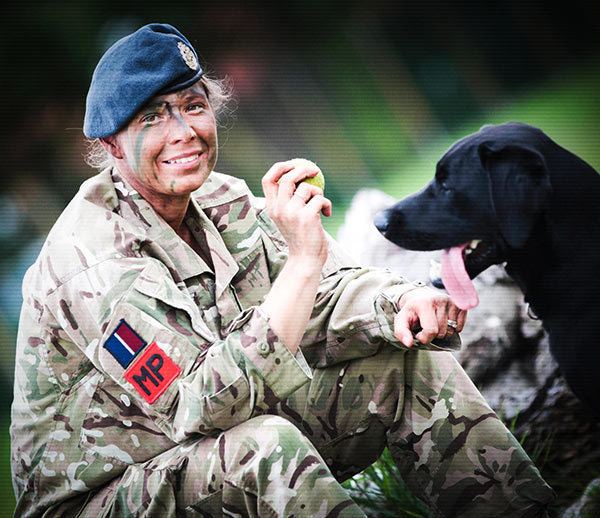 | ||
Roles Police, Counterintelligence Similar RAF Search and Rescue F, Royal Military Police, Royal Air Force, RAF Transport Command, RAF Air Command | ||
The Royal Air Force Police (RAFP) is the service police branch of the Royal Air Force, headed by the Provost Marshal of the Royal Air Force. Its headquarters are at RAF Honington and it deploys throughout the world to support RAF and UK defence missions.
Contents
- Promotional recruitment film for the royal air force police 1970 s film 15140
- History
- Uniform and insignia
- The Oath
- Mission Statement
- Role
- Organisation
- Training
- References

Promotional recruitment film for the royal air force police 1970 s film 15140
History
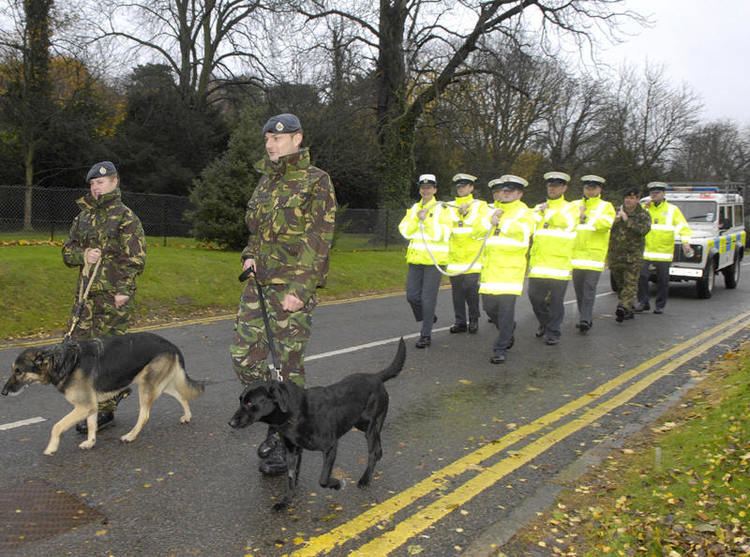
The RAFP was formed on 1 April 1918, when the RAF was formed by the merger of the Royal Flying Corps and the Royal Naval Air Service. By the end of World War II there were 500 officers & 20,000 NCOs in the RAFP. In January 1947, the RAF Provost Branch became a Specialist Branch within the RAF. In December 1950, George VI approved the crest and motto Fiat Justitia. By 2009, the RAFP had served in 66 countries around the globe.
Uniform and insignia

RAFP non-commissioned officers and warrant officers are noticeable by their white-topped caps (giving rise to their nickname of "Snowdrops"), which they have worn since 1945, and by black and red flashes worn below their rank slides. RAFP commissioned officers wear the standard peaked cap of all RAF officers, with the red and black flashes. In dress uniform, all RAFP wear a red and black brassard on the left arm, reflecting the flashes worn with normal working dress. In tactical dress, RAFP personnel wear red "MP" badges, the internationally recognised symbol for military police.
The Oath
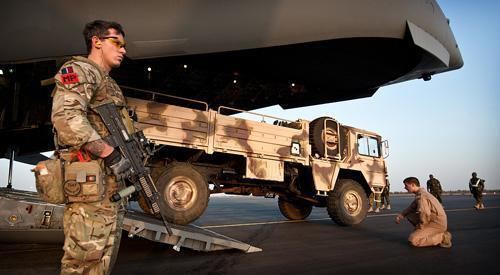
"I do solemnly and sincerely declare and affirm that as a member of the Royal Air Force Police I will well and truly serve Her Majesty the Queen, acting with fairness, integrity, diligence and impartiality, upholding fundamental human rights and according equal respect to all people; and that I will, to the best of my power, maintain service law and investigate independently and impartially all service offences against people and property; and that while I continue to be a member of the Royal Air Force Police I will, to the best of my skill and knowledge, discharge all the duties of that appointment faithfully according to law."
Mission Statement
To deliver focused Police, counter-intelligence and protective security services to commanders in support of Defence outputs.
Role

The RAFP are responsible for the policing and security of all service personnel, much like their Royal Navy and British Army counterparts.
Provision of policing, counter-intelligence and specialist security support to the RAF includes:
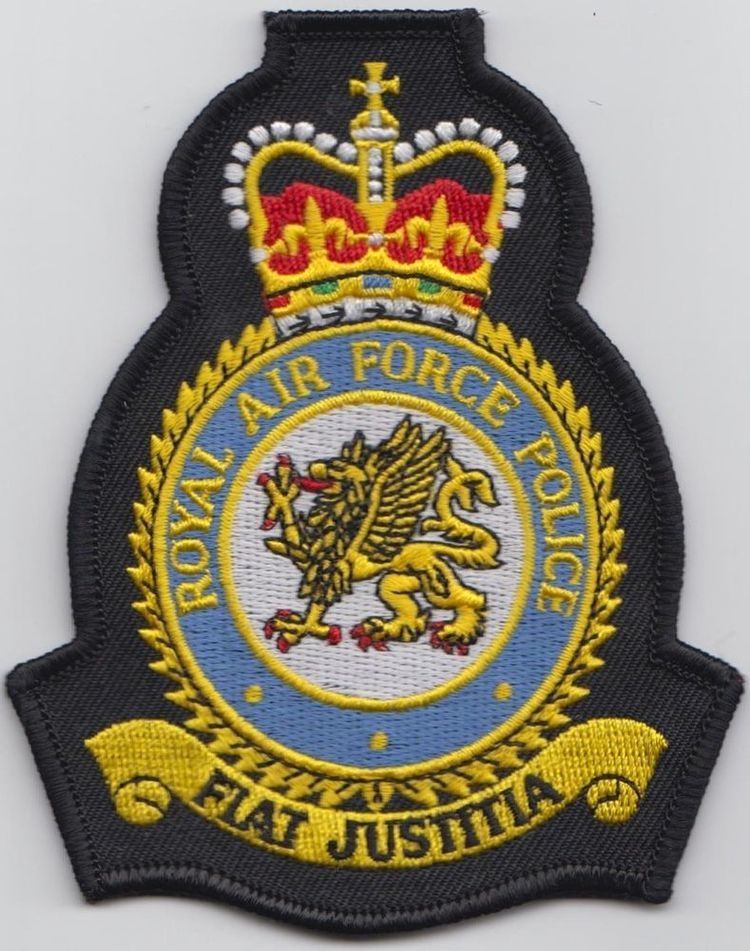
In addition to general policing, the RAFP has specialist security and criminal investigators tasked with the investigation of more serious and complex crime and security threats.
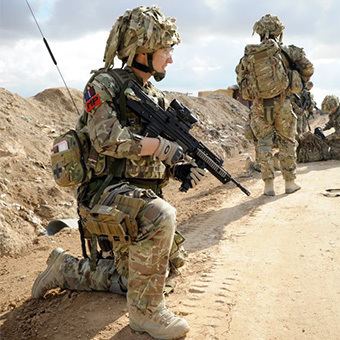
The RAFP Special Investigation Branch investigate serious and complex crimes within the Defence community, up to and including murder.
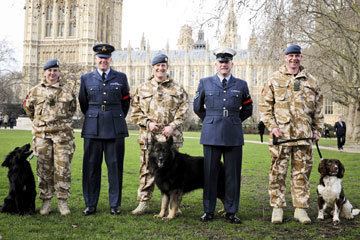
Counter Intelligence Operations Squadron investigate serious security breaches and support the RAF through the gathering of intelligence and protective security based activities.

These specialist capabilities are supported by forensic and intelligence units. Members of all wings are used for operations overseas, deploying as individuals, with the aircraft they support, or as a formed unit drawn together under the Tactical Police Squadrons. Members of the RAFP may also specialise in close protection duties, ensuring the safety of VIPs and other dignitaries in hostile environments.
The RAFP are the only branch of the Service Police who operate police dogs within the UK military. They manage all RAF military working dogs, with detachments at many RAF stations. RAFP dogs and their handlers support overseas operations. Recently, this has included Iraq and Afghanistan, in both patrol and specialist search roles.
The RAFP is subject to inspection by HM Inspectorate of Constabulary, in the same way as the UK's civilian police forces.
Organisation
The RAFP is headed by the Provost Marshal, who holds the rank of group captain. A component of the RAF's Force Protection Force, the RAFP is organised into three functional wings that operate nationally and internationally.
No 1 RAF Police Wing covers the North of the UK and Northern Ireland, and No. 2 RAF Police Wing the south. Each provides dedicated security and policing to the RAF Units and interests in its area and each has a Special Investigation Branch. No. 3 RAF Police Wing provides deployable and specialist support worldwide. It incorporates No.1 Tactical Provost Squadron (TPS) (formerly the Tactical Provost Wing) which forms the RAF Police's tactical, deployable capability; their primary role is to conduct forward policing and security of RAF personnel and assets. The Tactical Provost Squadron deployed personnel on operations to Afghanistan, where, as part of the RAF's Force Protection Wing, the RAFP provided internal security for Camp Bastion. On 12 May 2012, Cpl Brent McCarthy—an RAF Policeman stationed at RAF Brize Norton—was shot and killed while on duty in Helmand Province. In addition 3 Police Wing includes all RAF Police Reserves, 3 Tactical Police Squadron and 603 (City of Edinburgh) Royal Auxiliary Air Force Squadron. 3 RAF Police Wing moved to RAF Honington in 2015 to provide a single hub for RAF Force Protection
Detachments of RAFP can be found at most RAF stations. Usually, the detachment consists of a Flight, commanded by either a Flying Officer or a Flight Lieutenant; either a Flight Sergeant or Sergeant usually functions as the senior non-commissioned officer of the flight.
RAF Police Flights are responsible to and directed by a RAFP Squadron. Squadrons are usually based at larger stations and provide remote oversight of the Police Flights at all of the units within their respective area of responsibility. Squadrons are themselves responsible to, and directed by, the Assistant Provost Marshal of the RAFP, who is the Wing Commander of their respective Police Wing. RAFP personnel are not responsible to, or under the direct command of, the Commanding Officer (Base Commander) of the station at which they are situated; all service police remain under the command of the Provost Marshal (RAF). Their authority to act as service police stems directly from the Armed Forces Act 2006. Service police are able to issue lawful commands to any service person, regardless of their rank or trade. The RAF Police also provides the RAF's Protective Security (PS) role, similar to that carried out by the Intelligence Corps and elements of the Royal Signals of the British Army. IT Security (ITSy) is a further specialisation within the protective security field and personnel trained to this level are expected to perform all PS and ITSy related tasks.
Training
Ground Trades within the Royal Air Force start their service career at RAF Halton where they undergo Basic training. Once this is successfully completed, recruit intakes are dispersed to the various Ground Trades Training Schools.
Potential RAFP recruits are trained at the Defence College of Policing and Guarding (DSPG) at Southwick Park, Hampshire, along with the Royal Navy Police and the Royal Military Police. In order to conduct some of the wider specialist roles, particularly involving the investigation of more serious and complex crime and security investigations, extensive further post-graduation training is provided outside of DSPG to all RAFP specialists by Home Department Police Forces and Training providers. Most of the training requirements of a Home Department Police Force in terms of Detective training and Covert Operations are delivered to specialist RAFP elements.
During the 1950s, training was carried out at RAF Netheravon in Wiltshire, and in the 1960s at RAF Debden near Saffron Walden. Until the mid-1990s, trade training took place at RAF Newton in Nottinghamshire, before moving to RAF Halton in Buckinghamshire. In 2004, all UK service police training was consolidated at Southwick Park.
